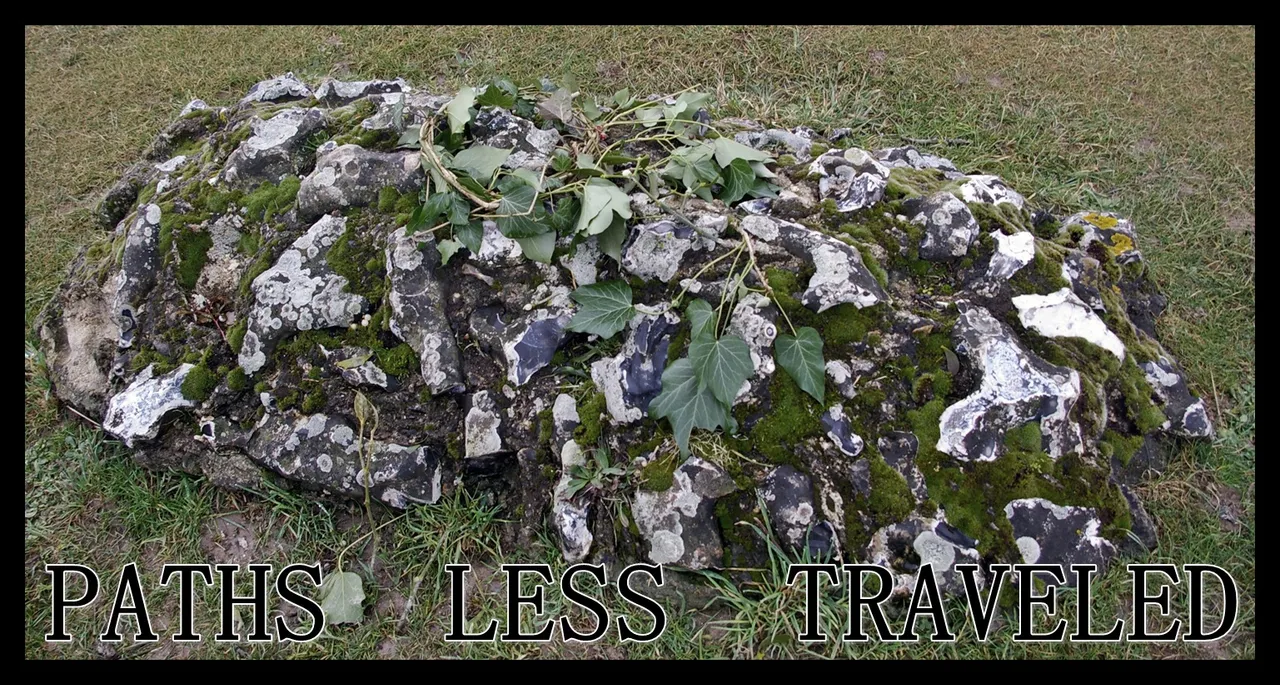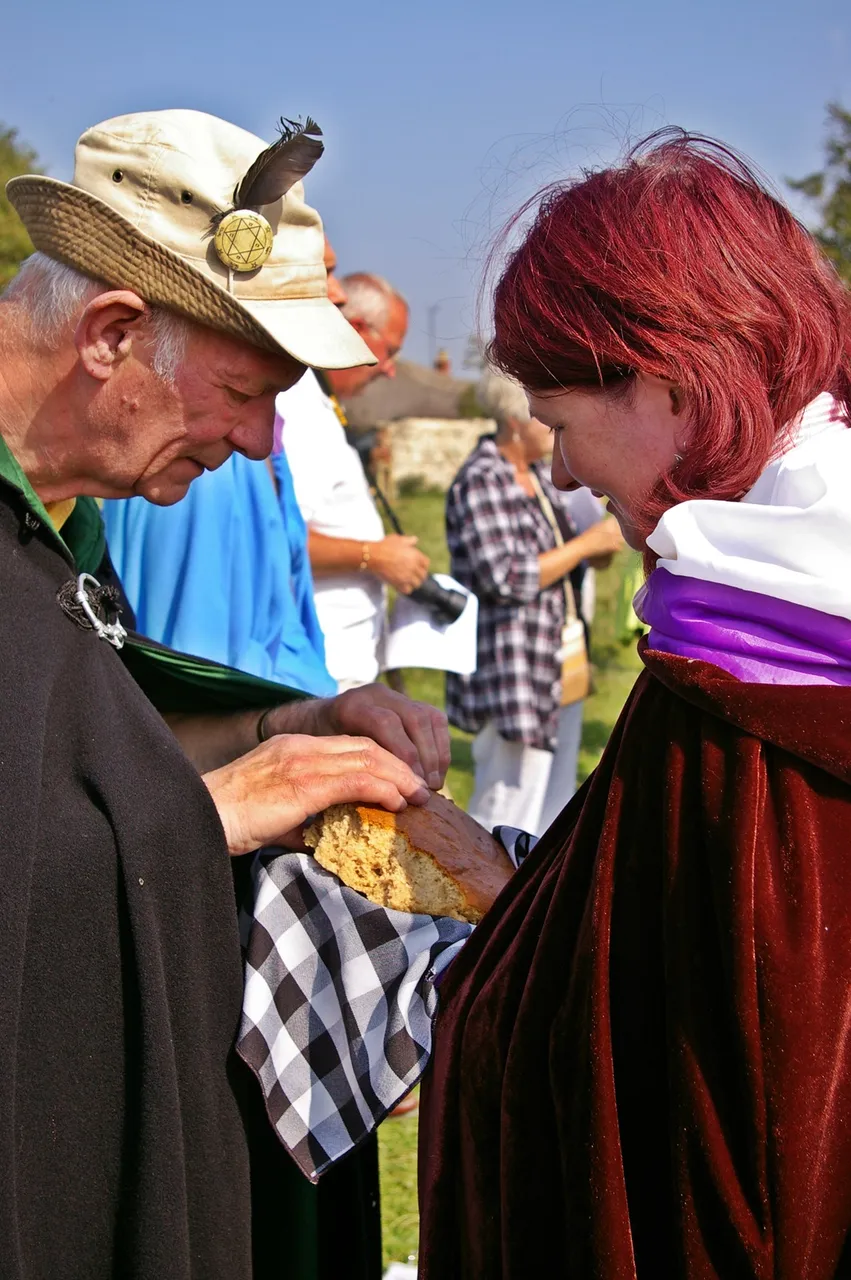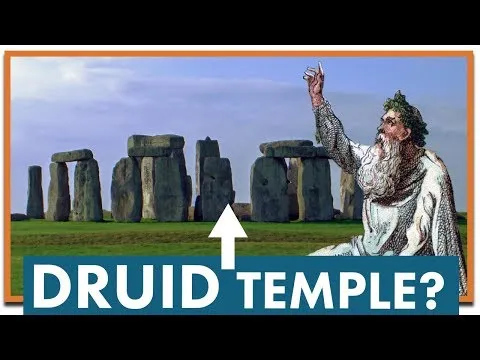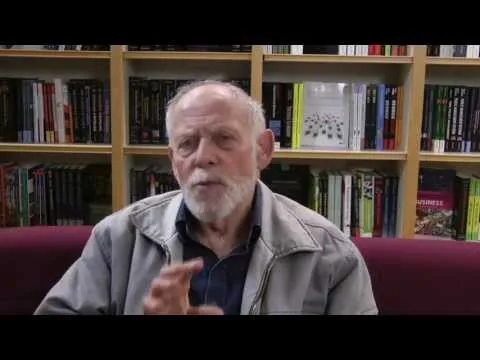
I shared a beautiful picture of a handfasting over at Uptrennd this morning. I didn't crosspost it on Hive because it's been here before. My crazy friend, @jamerussell asked me a very loaded question: What are druids? I guess it's time to go into that in a little more depth.
I will break this into two sections...
Who Were the Druids?
We tend to think of the famous, legendary wizard Merlin and his counterpart Mordred in the Arthurian legends of England. We remember the magick, maybe the wisdom, but there is a lot we don't remember.
Partly, because there's a lot we simply don't know. The druids didn't write things down for us to know much about them.
And what we do know has been badly tainted by Hollywood movies and/or the BBC's TV series such as the more recent Merlin which was a bit of a disaster after the first couple of seasons. BTW, Gaius in that show represents more of what I consider a druid than anything that either Merlin or Mordred was in that series.
Here are some more scholarly thoughts about the druids.
First from "Religion for Breakfast" on YouTube.
So, basically, all we know is from Julius Caesar, some rather biased Roman opinions and then some written observations from various sources.
Here's more from Barry Cunliffe (mentioned in Religion for Breakfast):
One of the most interesting takeaways from this video (in my opinion), is that the druids were well-respected in their day. Young men went to them to learn. The druids were learned men who were intermediaries between people and the gods, but they did a lot more.
However, I think whenever researching a people group - such as the druids - I would ask the people who have a vested interest in explaining exactly where things came from (as much as can be surmised, anyway) - the modern-day druids (sometimes called neodruids.)
Druidry.org is run by the Order of Bards, Ovates and Druids, affectionately abbreviated OBOD. The page I have linked is to their "What is a Druid?" page. Where they explain that druids were:
- Judges
- Teachers
- Kings and Advisers to Kings
- Scientists and inventors
- Alchemists and Metal-workers
- Peacemakers
- Philosophers
- Inner Sages
Who Are the Druids Today?
OBOD explains that druids are:
Spiritual individuals who have a variety of beliefs, but are fundamentally seeking wisdom, creativity and love in their lives.
Modern druidry is a philosophy, not really a religion. There are Christian druids, but in my experience, most druids believe at least some of the following:
- polytheistic/pantheistic/animistic
- nature-based (including animal welfare issues. Many are vegetarian, but those who aren't are usually concerned with animal welfare.)
- believe in an "otherworld" rather than Heaven/Hell
- do not believe in a "devil" (in common with almost all pagan paths)
- believe in reincarnation
- believe in the karmic law - as in, "As ye sow, so shall ye reap." (Attributed to both the Apostle Paul and the Egyptian Book of the Dead.)
The modern plurality of beliefs is demonstrated abundantly in the saying: If you ask two druids, expect three answers.
From my experiences and observations, most modern druids attempt to live up to the reputations of the ancient druids. They may not have everything perfectly correct, they have the spirit correct and are doing their best to follow both the ways of the ancestors within light of the modern world we all live in.
The courses offered by OBOD can be taken by anyone anywhere in the world and offers spiritual enlightenment to all. I did not finish my Bardic course (life got in the way - like with many things), but maybe one day I'll do it. It's good value for money.
What Do Modern Druids Do?
Besides learning and self-enrichment, many druids live a solitary path. Many others meet up for sabbats (the 8 festivals around the wheel of the year) to honor the spirits of nature, the ancestors, to "break bread" (and drink mead) together, to rekindle old friendships and spark new ones... and to simply enjoy being outdoors together - even in the often-rainy clime of Great Britain!
These gatherings are often held in stone circles or other megalithic sites in the UK. I, personally, attended rituals at Stonehenge, Avebury Stone Circle and in an open field in Dorset. (Since these pictures are all at least 10 years old, I am not too worried about sharing them.)
All of the ceremonies had several things in common.
- They were deeply spiritual
- They were not exclusive (against any other path)
- They were proud and reverent
- They were musical, loud and sometimes a little boisterous
- They were unifying - as much as is possible in this world
I'll close today with one of my favorite (Avebury) pictures of one of my good friends, known as JC (I'm not sure who the young lady was.) As the bread and the mead went around the circle, it changes hands with the words: "May you never hunger. May you never thirst."

This series originated with my own spiritual explorations and experiences. My goal isn't to challenge anyone's beliefs, but to help impart understanding of other belief systems and experiences and lessen the fear that some people have for people of alternate belief systems.
Image of Woodhenge Altar taken in England (2009) with my Pentax K100D.
Image of sharing the bread taken at Mabon (autumnal equinox) at Avebury Stone Circle with my Pentax K100D.
Crossposted to Uptrennd.
Previous issues of
Paths Less Traveled
Lori Svensen
author/designer at A'mara Books
photographer/graphic artist for Viking Visual
(Buy my work at RedBubble, TeePublic, PicFair and DeviantArt.)
verified author on Goodreads
(Buy my books at Books2Read and at LBRY)
find me on Twitter





